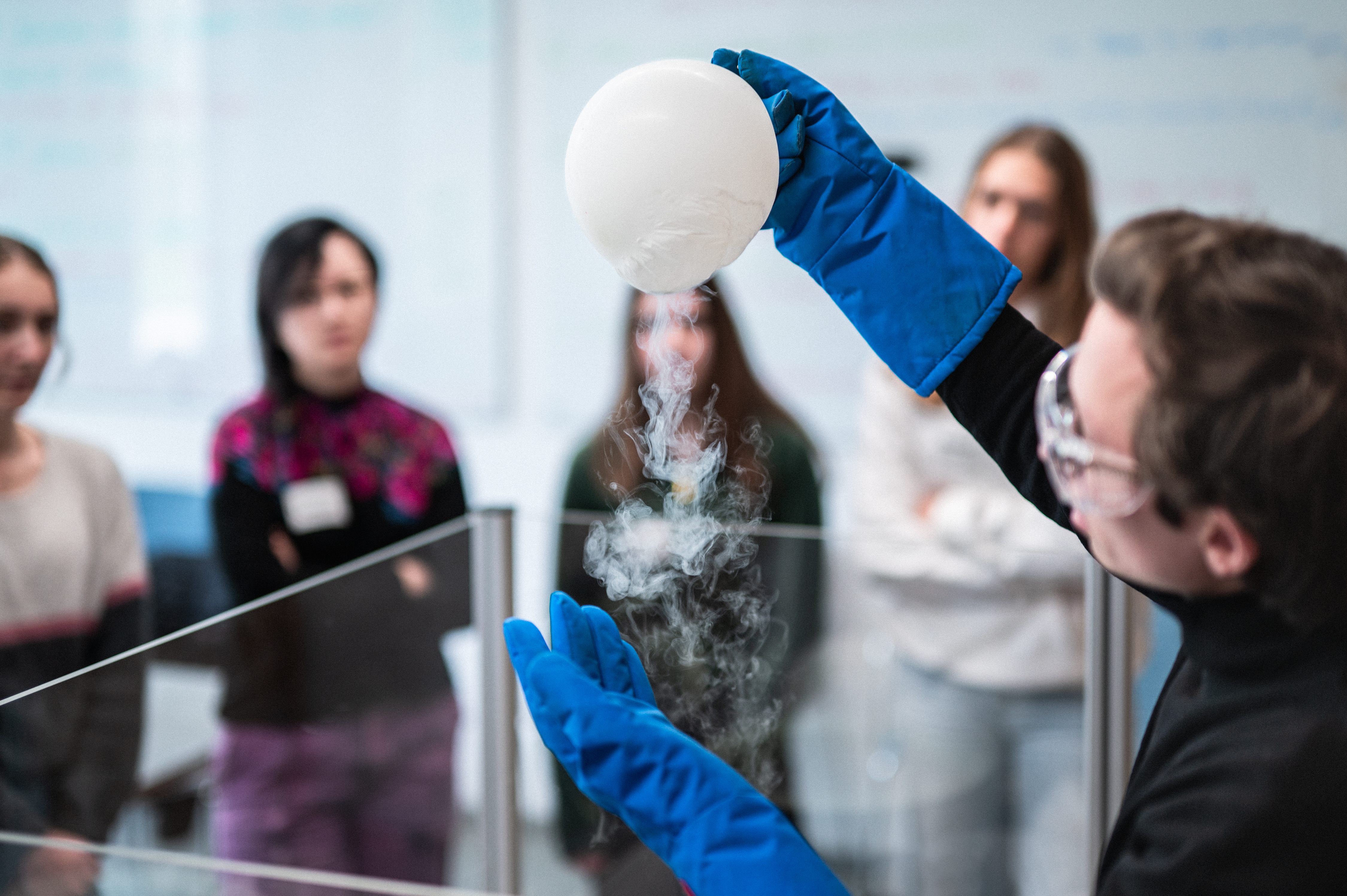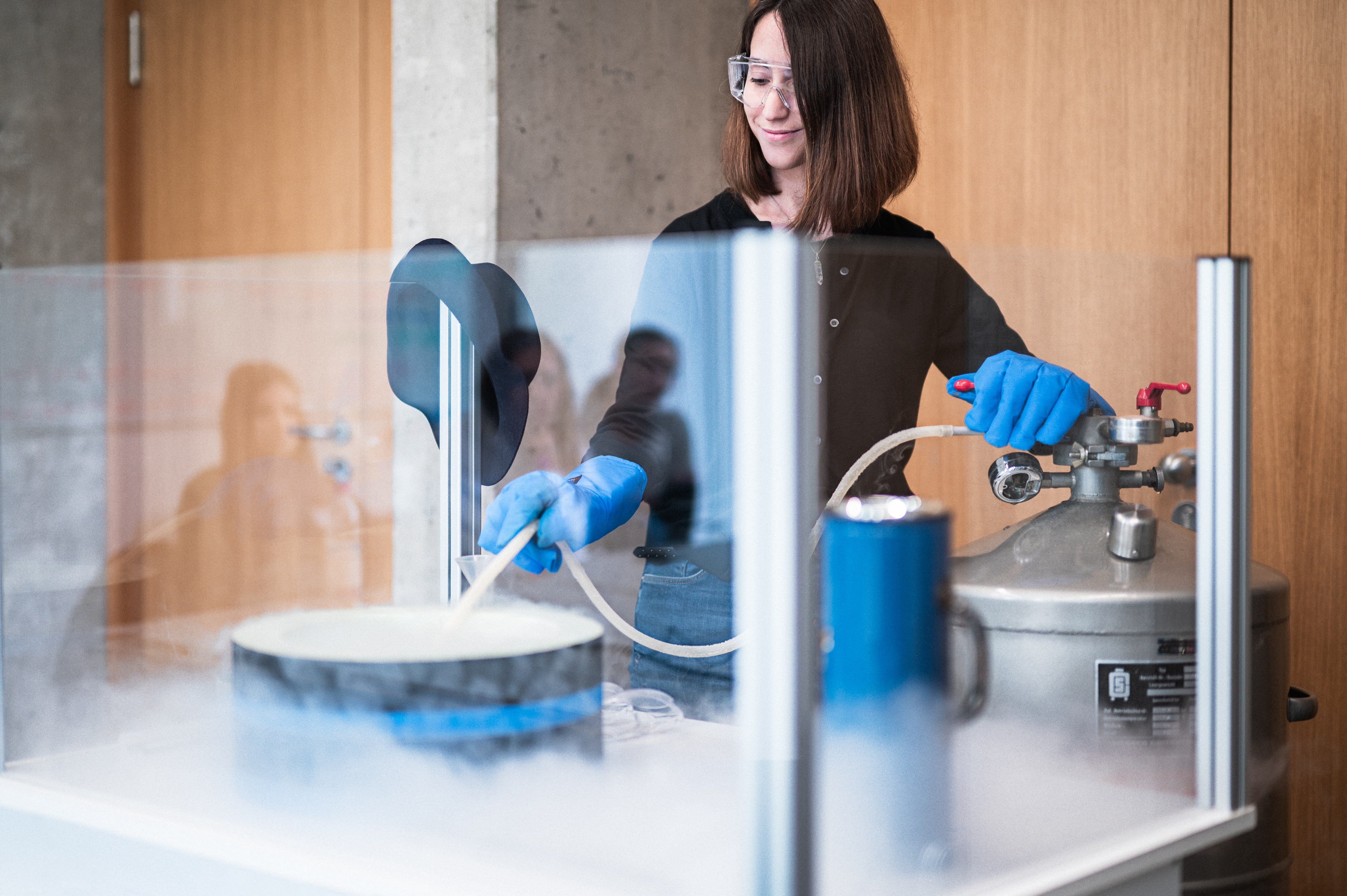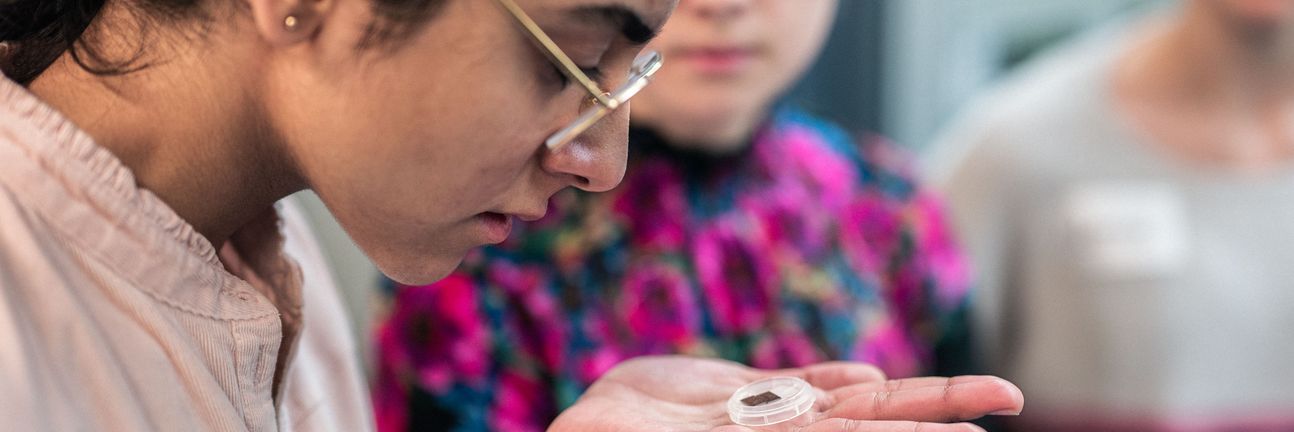"Unfortunately, our teacher always avoids the really exciting questions in physics class..." This problem did not arise when the girls were asking the scientists holes in their stomachs during Girls' Day at the Walther Meissner Institute (WMI). What does it do to an atom when we use it as a qubit? Can researchers estimate how likely a particular result is when measuring a quantum state, and can they influence quantum states? And how can we even prove that quanta can really be entangled over infinite distances?
Ten female students aged 14 to 16 took part in Munich Quantum Valley's Girls'Day event. At the Walther Meissner Institute of the Bavarian Academy of Sciences and Humanities, they were able to learn about the profession of (quantum) scientist through a diverse program.

Super cool: Liquid nitrogen
Heated discussions on the basics of quantum physics were followed by a cool-down in the truest sense of the word: experiments with liquid nitrogen. Dr. Noelia Fernandez, postdoc at WMI, and Julius Feigl, master's student in "Quantum Computing and Information Processing," demonstrated how various materials and gases behave at ultracold temperatures.
The girls were then allowed to immerse flowers themselves in the impressively swirling nitrogen and watched in fascination as they froze in seconds. Those who wanted to could then smash the frozen flower - rose confetti! The car hovering above the magnetic track also caused astonished exclamations and quickly drawn cell phone cameras during the demonstration of the Meissner-Ochsenfeld effect.
Highlight: The laboratory tour
It continued with a guided tour of the laboratories. And here, too, there was plenty on offer: Seeing the complex inner workings of cryostats up close, puffing helium pumps in the background. Holding tiny computer chips in the hand and discovering the qubits on them. Guessing how much the liquid helium in the giant tank costs.

Next generation of female scientists in the making
At the end, the girls were given the opportunity to make a "cookie lithograph" using cookies as a "substrate," powdered sugar in analogy to metal particles and paper masks they had cut out themselves, and to experience for themselves what they had just learned in the lab about how chips are made. "Oh no, now I messed everything up when I took the mask off," exclaims one girl. Noelia Fernandez can only nod at that - it happens to her in the lab sometimes, too.
Could the girls imagine becoming scientists themselves one day? Some nod eagerly - and ask directly if they can do an internship here. There could hardly be higher praise for the scientists at WMI who took the time to present their work to the young researchers.
